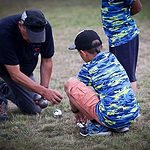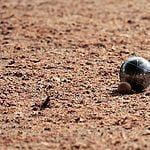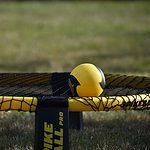When you think about practicing pickleball alone, the idea of limited gameplay might cross your mind. However, with the right approach, solo practice can significantly enhance your skills.
By exploring effective techniques and utilizing specific equipment, you can elevate your game even when you're on your own.
Let's uncover six valuable tips that will take your solo pickleball practice to the next level.
Key Takeaways
- Solo practice enhances skills, focus, and confidence.
- Utilize technology and tools for motivation and progress tracking.
- Join online communities for support and shared experiences.
- Develop muscle memory and refine techniques effectively.
Benefits of Practicing Pickleball Alone
Discover the numerous benefits you can reap from engaging in solo pickleball practice sessions. Solo pickleball drills offer a fantastic opportunity to focus solely on your game without any distractions.
By hitting the ball on your own, you can pinpoint and address specific weaknesses and strengths independently, leading to significant skill improvements. Through Shadow Swings and other solo drills, you can enhance muscle memory and shot consistency through consistent repetition.
This focused practice allows you to refine your shot accuracy and technique efficiently, ultimately boosting your overall pickleball performance. Engaging in solo pickleball practice not only helps you to improve your pickleball skills but also promotes self-improvement, confidence, and advancement in your gameplay.
Importance of Neuron Training
Enhancing neuron connections through solo pickleball practice leads to quicker reactions and sharper decision-making skills on the court. When you engage in solo practice, you aren't just honing your physical skills; you're also training your brain to react faster to different game situations. Neuron training plays a crucial role in improving your reaction times, enabling you to anticipate shots and move swiftly across the court.
Moreover, solo practice strengthens the neural pathways specific to pickleball movements. By repeating these movements consistently, you develop muscle memory, which is essential for executing precise shots and maneuvers during a game. This muscle memory allows you to perform complex techniques almost instinctively, giving you an edge over your opponents.
Ultimately, the enhanced neuron connections that result from solo practice contribute significantly to your overall game performance. Your improved decision-making abilities, faster reactions, and refined pickleball skills all come together to elevate your playing level and make you a more formidable competitor on the court.
Essential Equipment for Solo Practice
When engaging in solo pickleball practice, having essential equipment such as a paddle, pickleball, and a suitable practice area is crucial for skill development and improvement.
A good quality paddle that suits your playing style and grip preference is essential for executing various drills effectively.
The pickleball itself is another fundamental piece of equipment needed for solo practice sessions, ensuring you have the right gear to work on your shots and techniques.
Additionally, having access to a suitable practice area, whether indoor or outdoor, allows you to focus on your skills without distractions.
While some drills may require additional equipment like a pickleball net or machine, basic gear like a paddle and ball is sufficient for many solo drills aimed at enhancing your skills.
It's important to adapt and modify your practice routines based on the available space and resources to make the most out of your solo pickleball sessions. Investing in quality equipment can significantly contribute to the effectiveness of your practice and overall skill development.
Serve Practice Techniques
To elevate your pickleball skills during solo practice, mastering serve techniques is essential for honing consistency, speed variation, and court placement. Here are some tips to enhance your serve practice:
- Develop Consistent Technique: Focus on repeating the same motion for your serve to ensure consistency in your delivery.
- Vary Serve Speed: Practice changing the pace of your serves to keep your opponents guessing and improve versatility.
- Work on Serve Placement: Aim to hit different locations on the court with your serves to make it challenging for your opponents to return.
- Incorporate Serving Drills: Utilize drills that focus on accuracy and power to refine your serve technique and increase effectiveness.
Dinking Skills Development
Developing your dinking skills in pickleball elevates your game by enhancing your touch, finesse, and control near the net. Practicing dinking alone is an excellent way to improve your accuracy, consistency, and shot placement. To take your dinking skills to the next level, focus on incorporating variations into your practice sessions.
Dinking Skills Development Tips:
| Tips | Benefits |
|---|---|
| Vary Angles | Improves adaptability and reaction time |
| Change Heights | Enhances ability to read opponents |
| Vary Speeds | Develops control and finesse |
Home Practice Strategies
Enhance your home pickleball practice sessions with effective strategies that promote skill development and consistency.
- Wall Practice: Utilize a wall for target accuracy and consistent ball returns, helping you improve your shot placement and control.
- Shadow Swings: Incorporate shadow swings into your practice routine to focus on form and technique improvement. This allows you to perfect your stroke mechanics without the need for a partner.
- Footwork Exercises: Implement footwork exercises to enhance your movement and agility on the court. Improving your footwork won't only boost your speed but also your ability to reach difficult shots.
- Set Goals: Establish specific goals for your solo practice sessions to track your progress and stay motivated. Whether it's mastering a new shot or increasing your consistency, setting goals will keep you focused and driven during your practice sessions.
Utilizing Technology for Improvement
Elevate your solo pickleball practice sessions by incorporating cutting-edge technology to amplify your skill development and overall performance on the court. Utilizing technology such as virtual reality (VR) and apps like Pickleball: The Road to 5.0 can revolutionize your practice routine.
VR headsets offer realistic training experiences, allowing you to immerse yourself in strategic drills tailored for improvement. These technological tools aid in solo practice by providing precise feedback and in-depth analysis of your gameplay.
Apps go a step further by tracking your progress, offering detailed data on your performance, and suggesting personalized drills to address specific areas of improvement. By integrating technology into your practice sessions, you can enhance your skill development, receive valuable insights into your gameplay, and ultimately elevate your overall performance in pickleball.
Embrace the power of technology to take your game to new heights.
Wall Practice Benefits
Immerse yourself in the world of wall practice to enhance your shot accuracy, consistency, and reflexes like never before. Wall practice offers numerous benefits that can take your pickleball game to the next level:
- Improved Shot Accuracy: Hitting the ball against the wall repeatedly allows you to fine-tune your aim and control, leading to more precise shots on the court.
- Enhanced Reflexes: Practice hitting the ball against the wall helps in developing quicker reflexes and improving your reaction times during fast-paced rallies.
- Solo Training Convenience: Wall practice is perfect for solo training sessions when you don't have a partner available, enabling you to work on your skills anytime.
- Game-Like Scenarios: By simulating different game situations against the wall, you can practice specific shot techniques and strategies, preparing yourself for real match scenarios.
With wall practice, you can focus on your game fundamentals, refine your techniques, and elevate your performance on the pickleball court.
Overcoming Solo Practice Challenges
To conquer the obstacles of solo practice, you must proactively address common challenges such as lack of motivation and accountability. Setting specific goals is key to overcoming these hurdles. When you have clear objectives in mind, you're more likely to stay focused and committed to your solo practice sessions. Additionally, utilizing technology can be a game-changer. By leveraging apps or tools to track your progress and set reminders, you can boost your motivation and hold yourself accountable.
Creating a structured practice routine is another effective strategy. By establishing a schedule and sticking to it, you can make your solo practice more engaging and productive. Moreover, joining online communities or forums dedicated to pickleball can provide you with the support and encouragement you need. Connecting with like-minded individuals who share your passion for the sport can help combat feelings of isolation during solo practice. Remember, you're not alone in your journey to improve your pickleball skills through solo practice.
Mental Focus and Discipline
Transitioning from overcoming solo practice challenges to delving into mental focus and discipline, maintaining your mental sharpness is essential for maximizing the benefits of solo pickleball practice. To excel in this aspect, here are four key points to consider:
- Focus: Concentrate on the present moment during solo practice to enhance your overall performance and skill development.
- Discipline: Stay committed to your practice routines and goals to see continuous improvement in your game.
- Mental Toughness: Develop resilience and adaptability through solo practice, which will help you face challenges effectively during competitive matches.
- Visualization Techniques: Utilize mental imagery to enhance decision-making and execution on the court, preparing yourself mentally for various game scenarios.





